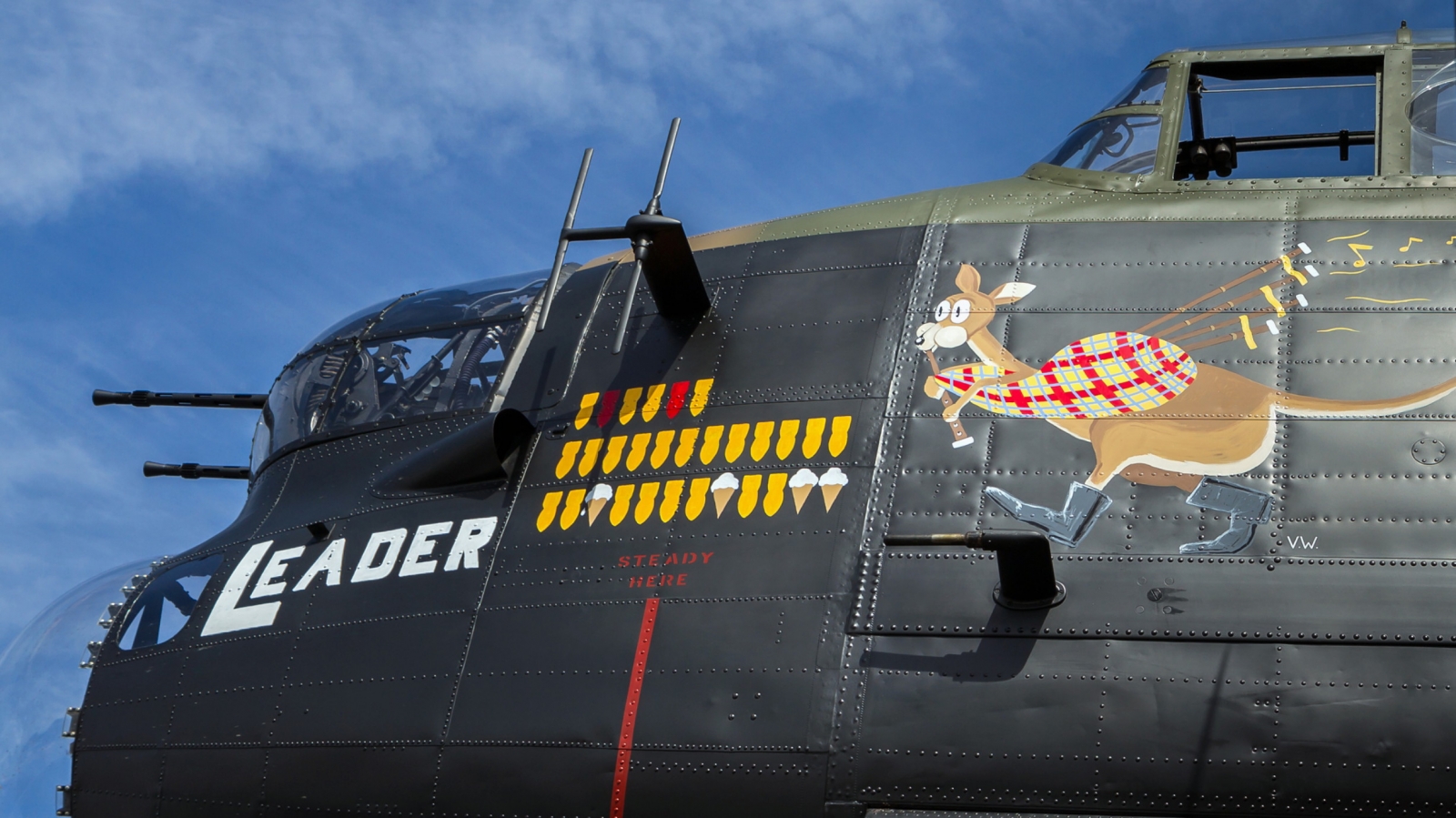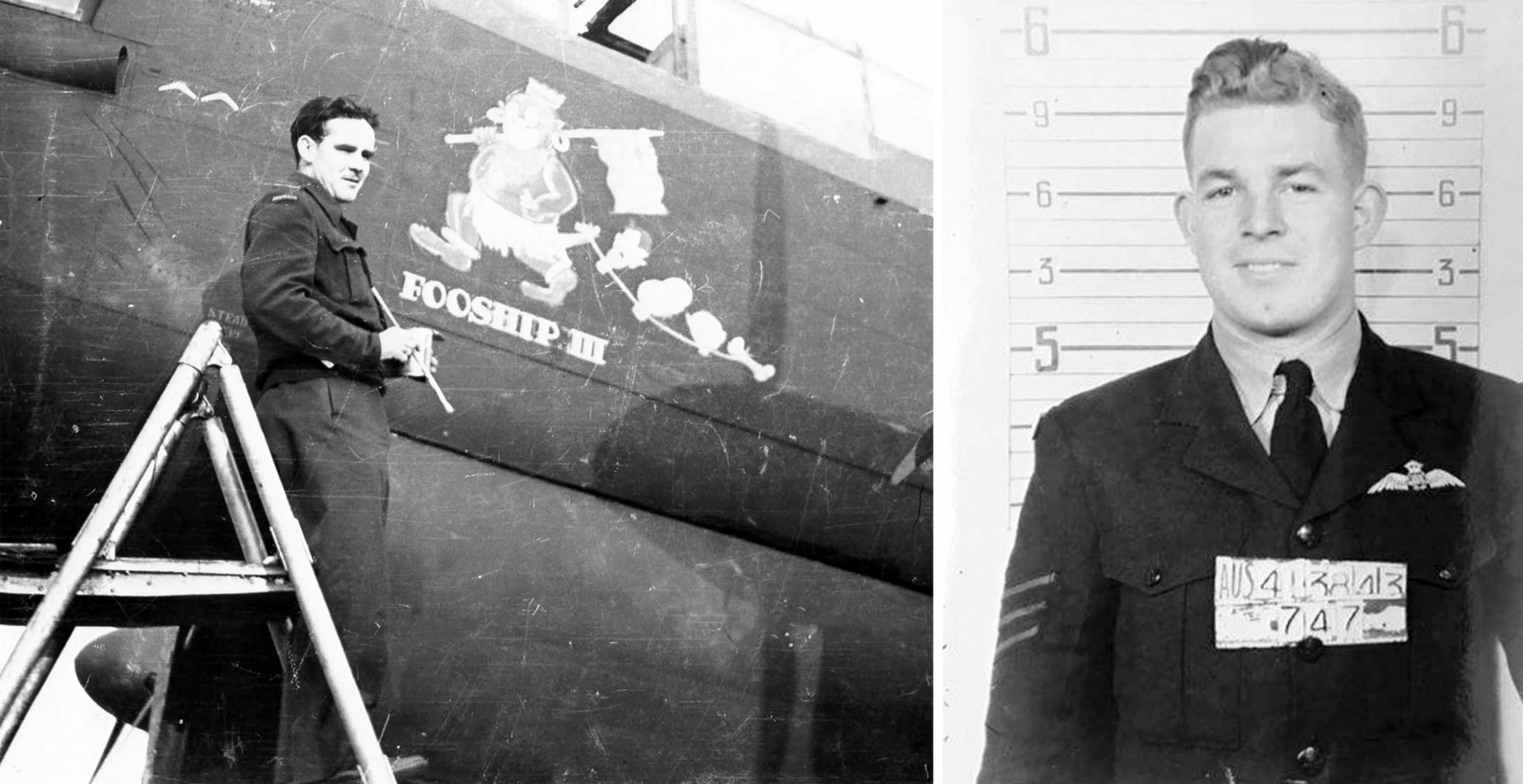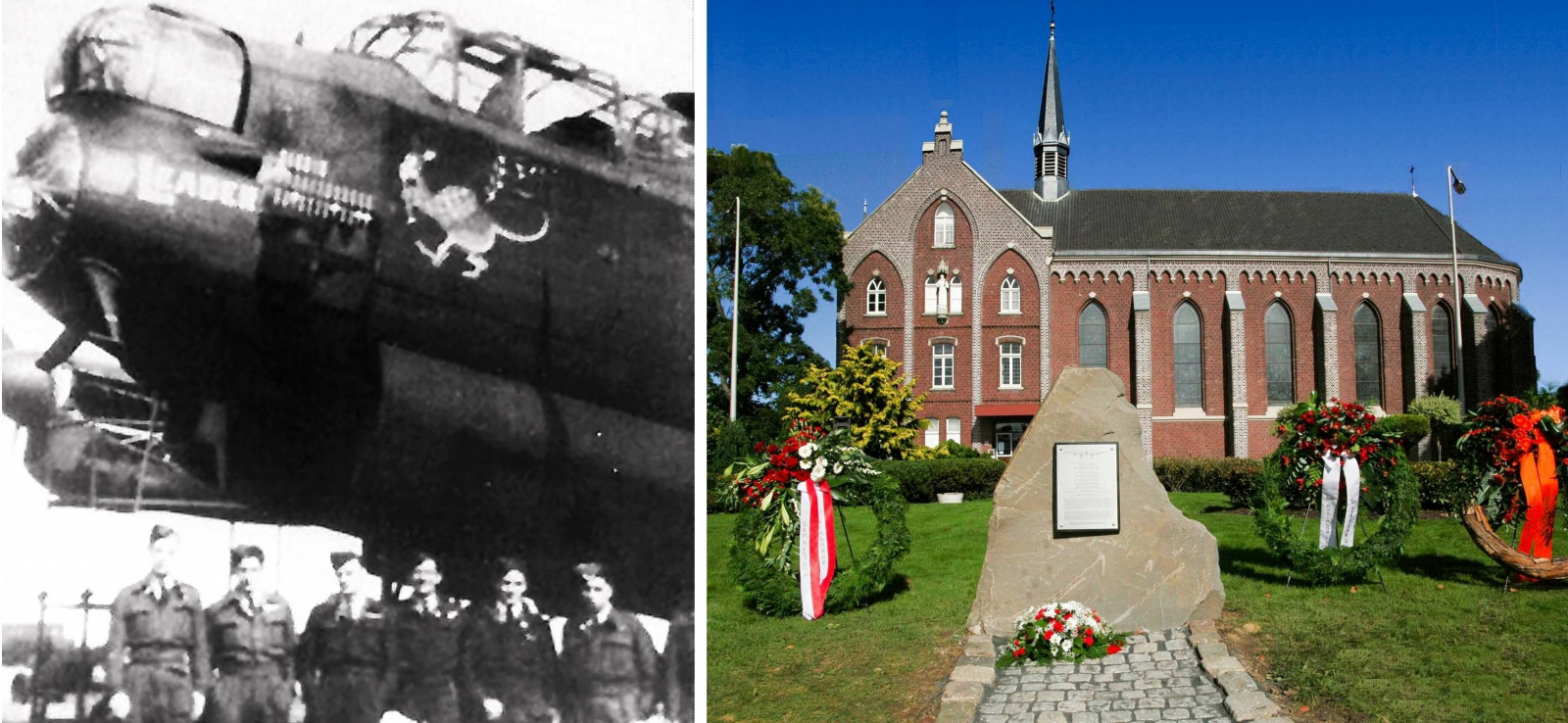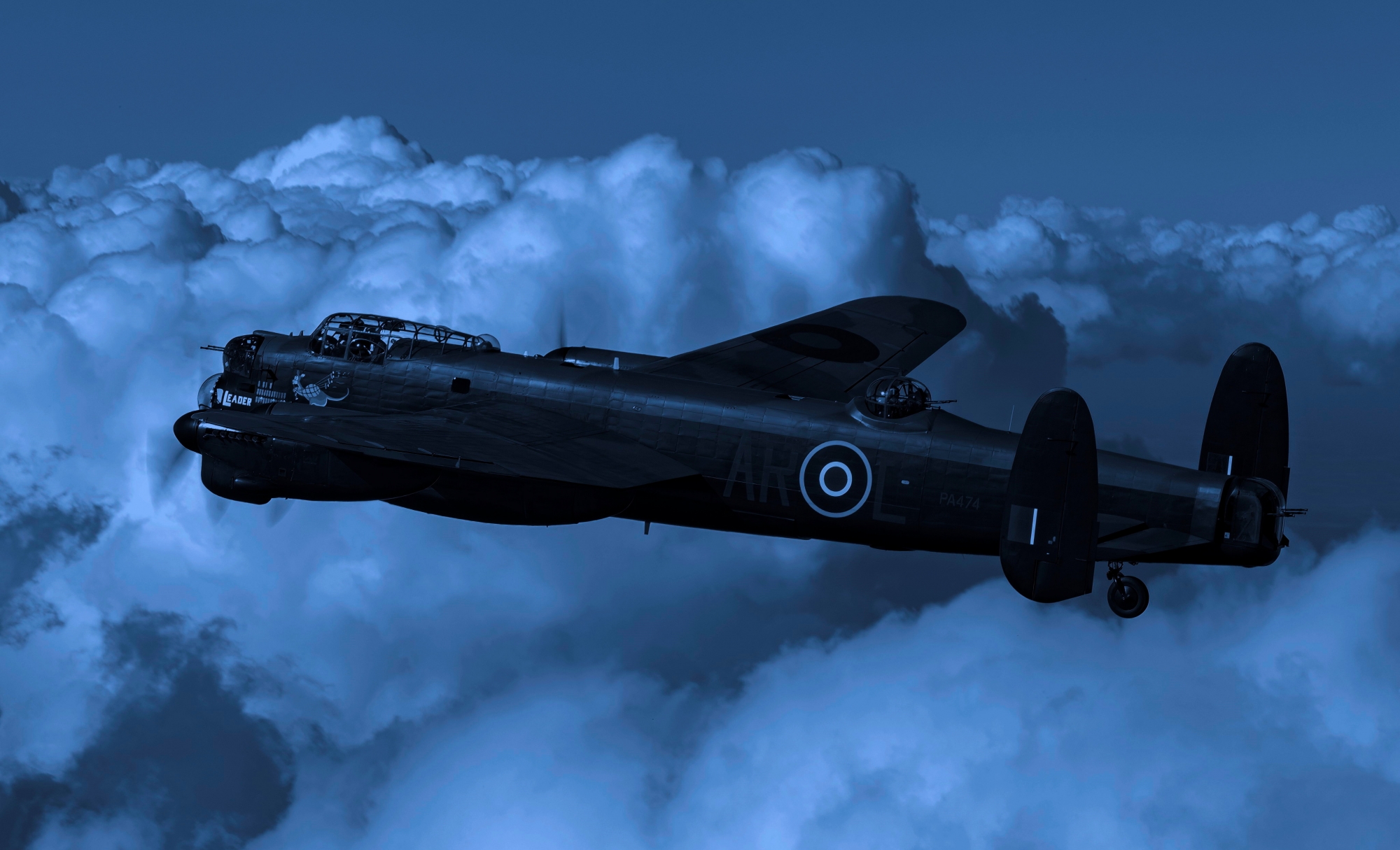460 Squadron Lancasters – December 1943
Header Image: Lancaster W5005 ‘AR-L’ “Leader” of 460 Sqn RAAF took part in several night bombing raids against Berlin and returned safely, unlike some other Lancasters and their crews from the same unit. (Original Photo: Darren Harbar)
Many regular readers and supporters of the BBMF will know that the Flight’s Lancaster, PA474, is currently painted on its port side with the markings of 460 Squadron RAAF Lancaster ‘AR-L’ “Leader”, which flew with the squadron from Binbrook between May 1943 and April 1944. Eighty years ago this month, in December 1943, 460 Squadron was involved, along with the rest of RAF Bomber Command, in regular raids against the German capital city of Berlin, a campaign that lasted from November 1943 to March 1944 and became known as the ‘Battle of Berlin’. Raids were also launched against other German cities during this period to try to keep the enemy guessing as to the target for the night.
The original Lancaster named “Leader”, with its nose art of a kangaroo in wellington boots playing bagpipes, was 460 Squadron’s W5005. This aircraft went to Berlin four times during this period, sorties that typically lasted seven and a half hours according to the operational records. Successful bombing operations were recorded on W5005’s ‘ops log’ with bomb symbols painted on the port side under the cockpit. The sorties against Berlin were marked with red bombs, indicating the extra risks and dangers of raids against the German capital, which was deep into enemy airspace and heavily defended. Indeed, 460 Squadron lost a total of 36 aircraft on operations during the Battle of Berlin. In December 1943 alone, 11 of 460 Squadron’s Lancasters involved in raids on Berlin were shot down over enemy territory or crashed on English soil. It certainly was not a festive month for the squadron in 1943.

On the night of Thursday 2nd December 1943, 25 of 460 Squadron’s Lancasters were scheduled for an operation against Berlin. Tragically, five of the aircraft failed to return and, in one of the worst nights of the war for the squadron, 27 aircrew were killed and eight became POWs. In addition, two civilian war correspondents who were flying with the squadron that night were both killed, demonstrating the dangers they faced in attempting to bring war stories to the public. Mr Norman Stockton, a 40-year-old Australian journalist for the Sydney Sun newspaper was flying with the crew of Pilot Off James “Jimmy” English DFC RAAF. English was on his 29th ‘op’, just one short of completing his tour, but he was killed when their Lancaster, W4881, named “Fooship III”, exploded after being attacked near Berlin by two night-fighters which shot away the tailplane and killed the two gunners and the wireless operator outright. Three of the crew were blown out of the spinning bomber when it exploded; they parachuted to earth to become POWs. Meanwhile, Mr Johan Grieg, a Norwegian war correspondent, died with the entire crew of Lancaster LM316 ‘AR-H2’, captained by Flying Officer Alan Mitchell RAAF, when it was ‘coned’ by searchlights and hit by heavy ‘flak’ over Berlin. The loss of five aircraft and their crews in one night must have been a devastating blow for the squadron.

A fortnight later, on Thursday 16th December, 460 Squadron launched 20 Lancasters on another raid against Berlin (although one returned shortly after take-off with a technical fault). This was the night that was to become infamous as “Black Thursday”, when thick fog and low cloud over the Bomber Command bases in England caused 43 bombers to crash. This tragic event was covered in the Club newsletter for December 2018 and the story can be found here. Of the 460 Squadron Lancasters on the raid, four crashed trying to land in the bad weather, two of the crews escaped unscathed when their aircraft crash-landed in fields, but nine men in the other two aircraft were killed and one was severely injured.
On 29th December, 23 Lancasters of 460 Squadron were scheduled for another raid on Berlin as part of a total force of 712 aircraft (457 Lancasters, 252 Halifaxes and three Mosquitos). Two of the 460 Squadron Lancasters failed to return from this operation: JB298 ‘AR-Q’ captained by Flying Officer Ron MacIntyre RAAF and JB607 ‘AR-N’ flown by Pilot Officer Stan Ireland RAAF and his crew, three of whom were British RAF men. MacIntyre’s Lancaster exploded over Berlin and JB607 was shot down by a night fighter over the Netherlands. There was only one survivor from both crews.
Lancaster JB607, with Stan Ireland at the controls, was first attacked by a night fighter over Germany on the flight home from Berlin but, although the aircraft was hit, he was able to shake it off. However, as the Lancaster approached the Netherlands, near Aachen, it was attacked again by a night-fighter, a Messerschmitt Bf 110 flown by Leutnant Heinz Oloff of 2./NJG 1. His cannon fire set the Lancaster ablaze and probably killed four of the crew outright. Only the Australian bomb aimer, Flight Sergeant Frank Seery RAAF was able to bail out through the escape hatch under his position in the nose, before the Lancaster crashed in the grounds of a monastery at Kerkrade in the Netherlands. Seery was captured and spent the remainder of the war as a POW.

Right: The memorial at the crash site of Lancaster JB607 ‘AR-N’ at Kerkrade, in the Netherlands, for Stan Ireland’s 460 Sqn crew, six of whom were killed in the crash on 29th December 1943.
Several Internet online sources including, disappointingly, the Australian War Memorial site, lay claim to Lancaster JB607 being the 460 Squadron aircraft which wore the bagpipe-playing kangaroo nose art. This ‘red herring’ seems to have arisen because of a 1943 photo of the Stan Ireland crew in front of the 460 Squadron Lancaster with the kangaroo nose art. Some have assumed that this was the Ireland crew’s aircraft and, therefore, was JB607 ‘AR-N’ in which they were shot down on 29th December 1943. In the photo the ‘ops log’ on the nose of the Lancaster forward of the nose art has 30 bomb symbols, indicating the aircraft had flown 30 successful ‘ops’. The Ireland crew’s Lancaster JB607 was on only its ninth ‘op’ when it was lost on 29th December 1943. It could therefore not have worn 30 ‘op’ symbols. In addition, JB607 wore the 460 Squadron code letters ‘AR-N’, whereas the Lancaster with the kangaroo nose art has the letter ‘L’ on the nose (rather than ‘N’), which has been extended naturally into the name “Leader”. Further careful research and matching the ‘ops’ flown with the ‘ops log’ on the aircraft leaves no doubt that W5005 was the Lancaster with the kangaroo and bagpipes nose art and the name “Leader”. The photo with the Ireland crew in front of W5005, with some nice ‘Aussie-influenced’ nose art, was taken during a press day at Binbrook on 9th September 1943 and does not mean it was their aircraft (the Ireland crew never actually flew W5005).
Overall, during just over three years of operations in the Second World War, 460 Squadron lost 181 aircraft on operations and suffered 1,018 fatal casualties (589 of them Australian and 429 British, demonstrating the mixed nature of the unit).
LEST WE FORGET







